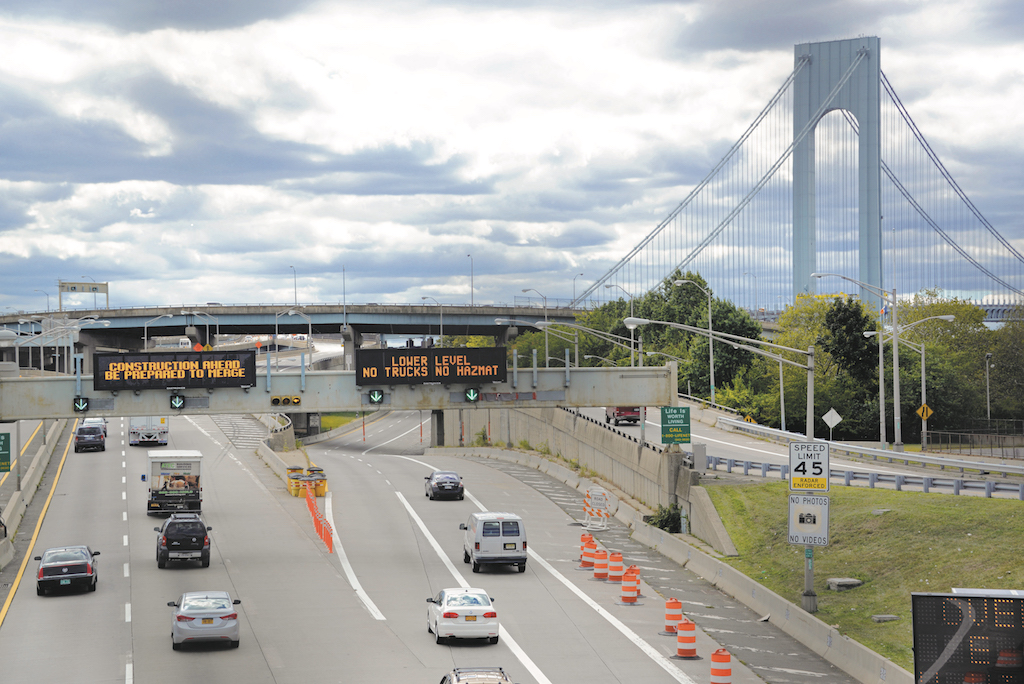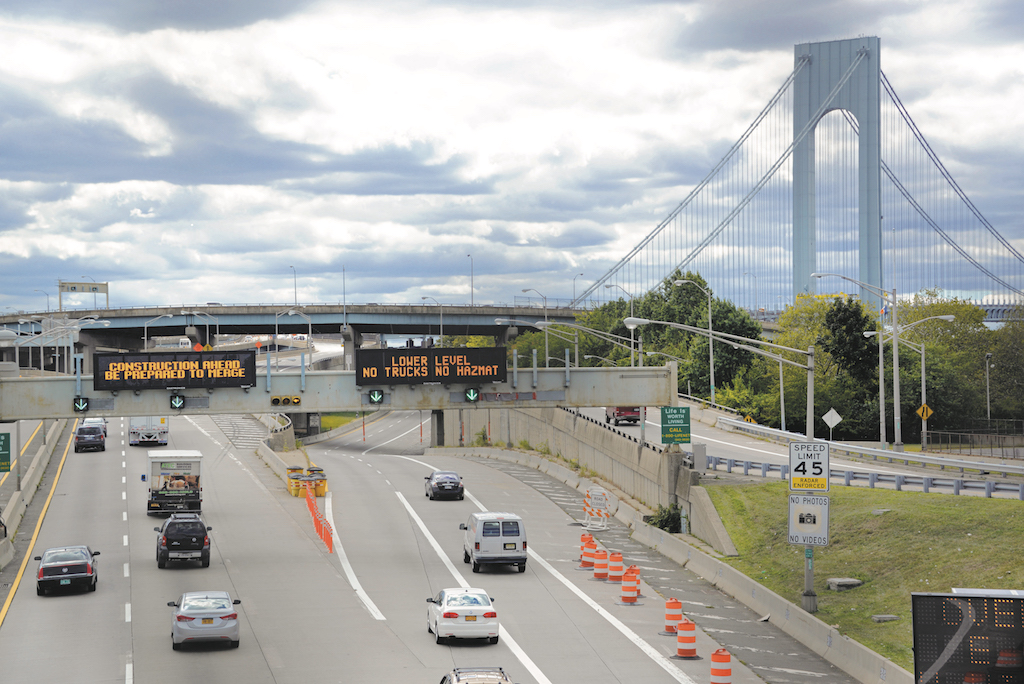
The 92nd St. entrance in Brooklyn to the Verrazano Bridge.
BY COLIN MIXSON | Truth be tolled, one local congressman thinks it’s time for a change.
Dan Donovan has asked the Metropolitan Transportation Authority to study the impact of re-establishing a two-way toll on the Verrazano Bridge, which would nix the current one-way toll that’s been blamed for rush-hour traffic jams in Gowanus and Park Slope and increased congestion on Canal and Broome Sts. in Lower Manhattan.
As the Staten Island representative for a Republican-dominated Congress, Donovan’s support would be crucial for any changes to the federally controlled Verrazano Bridge. His sudden interest in a new study is a good sign that change may finally be coming to the span’s toll structure, according to Craig Hammerman, district manager of Brooklyn’s Community Board 6.
“If there’s a sense conveyed to the government and M.T.A. that there is interest and support on both sides of the Verrazano Bridge for this, then I don’t see how this wouldn’t happen,” Hammerman said. In January, the district manager fired off a letter to Governor Cuomo requesting a similar study of a two-way toll’s impact.
Designed to appease Staten Islanders, the bridge’s current one-way toll exists thanks to a 1986 act of Congress — making it the state’s only municipal span governed by federal lawmakers.
Back in the early 1980s, Staten Island voters kicked up a fuss about pollution from the Verrazano’s massive toll plaza, which ensnared traffic on that borough’s side of the span.
But the new toll structure not only benefitted Richmond County residents, but also New Jersey commuters, who realized they could exploit the new one-way toll — which only taxes drivers headed into Staten Island — and save money on their trip by taking the bridge into Brooklyn instead of the tunnels into Manhattan.
And the toll-skipping scheme is especially cost-saving for truckers, who can be taxed more than seven times what passenger cars pay for a trip across the bridge.
In the more than three decades since then, transit advocates throughout Brooklyn and Lower Manhattan — including Democratic Congressmember Jerrold Nadler — have called for drivers once again to be taxed heading in both directions along the Verrazano, citing traffic concerns and lost revenue.
But Staten Island congressmembers have routinely thwarted change on behalf of their right-of-center constituency, making the reform impossible in a Congress that — barring a few years during former President Obama’s first term — has been dominated by Republicans.
Hammerman, though, renewed the push for a two-way toll with his January letter to Cuomo in light of new cashless toll technology, which, in combination with E-ZPass, allows drivers to breeze across the bridge without stopping to pay a toll, relieving Staten Islanders of their pollution argument when it comes to preserving the one-way tax scheme.
Donovan, however, has said he would not support the change without a study proving its efficacy. Good on his word, he fired off a letter to acting M.T.A. Chairperson Fernando Ferrer, requesting a study to determine the traffic and revenue-generating impacts of the toll change.
“Having Donovan on board would obviously be extremely helpful, if not critical, to making this happen,” Hammerman said.
“If the M.T.A. is going to recoup the millions of dollars they’re losing now by having a one-way-toll and it doesn’t cause more traffic — in fact, it lessens traffic — and we could use some of that revenue that they would now generate to help the people of Brooklyn and Staten Island, then it is something I would very much consider,” Donovan said.
As reported by The Villager back in June 2014, Nadler told the Manhattan’s Community Board 2 that he anticipated the bridge fee would revert to two-way before long due to high-speed tolling.


















